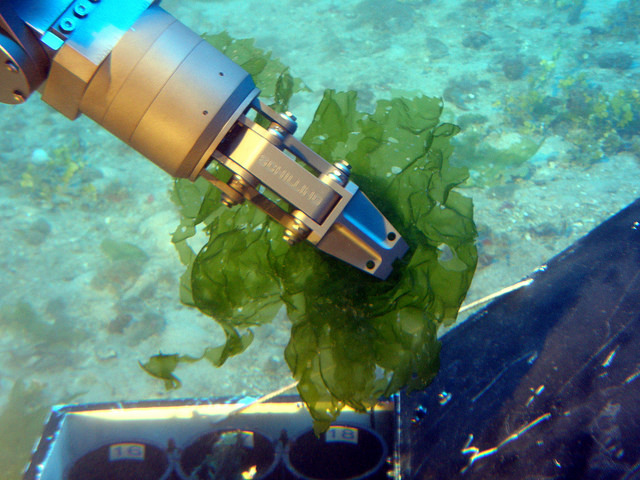Four new algae species discovered in deep Hawaiʻi waters
 New species of deep-water algae Ulva ohiohilili collected by a HURL submersible at a depth of approximately 300 feet off west Maui. Image courtesy of the HURL archives.
New species of deep-water algae Ulva ohiohilili collected by a HURL submersible at a depth of approximately 300 feet off west Maui. Image courtesy of the HURL archives.
Scientists working with NOAA’s Office of National Marine Sanctuaries announced the discovery of four new species of deep-water algae from Hawai‘i. Marine algae, or limu, are very important in Hawaiian culture, used in foods, ceremonies and as adornments in traditional hula. The new species of limu were collected between 200-400 feet, depths not typically known for marine algae. Heather Spalding, postdoctoral researcher at the UH Department of Botany and lead author of the study, said, “I was astounded at the abundance and size of these algae, which resembled something you would see in a shallow-water lagoon, not at 400 feet.”
The species were sampled during surveys between 2013 and 2015 in Papahānaumokuākea Marine National Monument by NOAA divers using advanced SCUBA diving technologies, and during past NOAA expeditions from 2006 to 2014 throughout the Main Hawaiian Islands using submersibles operated by the Hawai‘i Undersea Research Laboratory (HURL). Scientists anticipate that many additional new species of algae will be described in the coming years from samples collected by NOAA divers on future expeditions to the monument.
Read more about it at EurekAlert!, Science Codex, Maui Now, and Nature World News.



